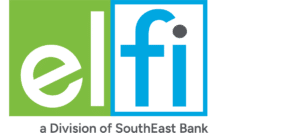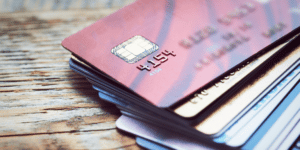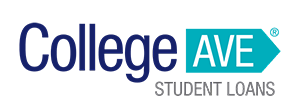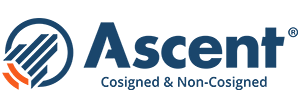Paul Tran is a well-known YouTuber, and he’s also a pharmacist. He graduated from the University of Washington with his Doctor of Pharmacy (Pharm.D.) degree, but he left school with a significant amount of student loan debt — over $80,000.
On YouTube, Tran shared how he managed to pay off his debt quickly. Here’s what he did — and what you can do to pay off your own debt.
Pharmacist Student Loan Debt
Pharmacists can earn high salaries — in 2021, the median pay was $128,570 — but the majority of pharmacists have substantial amounts of debt. According to the American Association of Colleges of Pharmacy, the median student loan balance was $175,000 in 2020.
For Tran, the key to paying off his debt was taking on a second job. Beyond the extra income, Tran said that his schedule kept his spending in check.
“That [the dual work schedules] keeps you busy throughout the week so you don’t really have too many days off where you spend that money,” Tran said.
Between his two jobs, he was receiving a paycheck every week. And every time he did get a paycheck, he made an extra payment toward his loans.
“Every paycheck I got, I would immediately make a payment to my student loans,” Tran said. “Because every single day that passes, that loan accrues interest.”
Working multiple jobs can be grueling. But for Tran, it was worth the sacrifice to become debt-free.
“It can be hard,” Tran said. “Once you finish school you want to work, but a lot of people want to play. If you can be disciplined enough to just grind it out for a year or two, you can get rid of your debt pretty quickly.”
7 Ways Pharmacists Can Pay Off Student Loans Faster
If you’re a pharmacist dealing with student loan debt, you know what an impact loans can have on your life. To get rid of your debt as quickly as possible, use these seven tips:
1. Make Extra Payments
If you only pay the minimum amount toward your loans, you’ll be in debt for the entire loan term. Depending on the type of loan you have, that could mean being in debt for 10 to 25 years.
The key to reducing the amount of time you’re in debt is paying more than the minimum required.
When you make extra payments, you can chip away at the principal faster. Even small amounts can make a big difference.
Some ways to free up money for extra payments include:
● Get another job: As Tran found out, getting another job can make a significant impact on your debt. You don’t have to work two full-time jobs. A side gig or a part-time job you only do on the weekends still allows you to earn money and pay down debt faster.
● Sell unused items: You likely have unused items around your home, such as old computers, phones, books, or sports equipment. You can turn that clutter into cash you can put toward your loans by selling them on sites like Gazelle, eBay, or even Craigslist.
● Cancel subscriptions: There are so many apps and streaming services out there, and you may sign up and forget about some of them. Review your subscriptions every month to see if there are any you can cancel; you can quickly save $10 to $50 per month by canceling subscriptions.
● Reduce your grocery spending: If you get takeout or eat at restaurants fairly often, try to reduce your spending. Cut back how often you dine out and spend some extra time meal planning instead. You can free up hundreds of dollars by preparing all of your meals yourself.
● Rent out extra space: If you have any extra space in your home — an unused closet, an extra bedroom, or an empty parking space — you rent it out to neighbors looking for storage on sites like Neighbors or SpotHero.
2. Target the Highest Interest Rates
If you have multiple student loans, the fastest way to pay off your debt is to apply extra payments toward the loans with the highest interest rates. This approach, known as the debt avalanche strategy, will allow you to save more money than targeting the debt with the lowest balance.
The 2 Best Companies to Refinance Student Loans
Our Top-Rated Picks for 2024 Offer Low Rates and No Fees

3. Enroll in Employer Assistance Programs
Depending on where you work, you may be eligible for employer assistance with your student loans. A growing number of employers are offering student loan repayment as a benefit to their workers. In fact, the Employee Benefit Research Institute reported that 17% of employers offer student loan repayment assistance, and an additional 31% said they will add the benefit to their compensation packages in the near future.
Employee student loan repayment programs function much like employer-sponsored retirement plans. The company will match your payments up to a percentage of your salary or a monthly maximum. For example, an employer may match your payments up to 1% of your pay or $100 per month.
By taking advantage of these programs, you can pay off your loans much faster and save money on interest.
4. Sign Up For Autopay
Most student loan lenders, both federal and private, offer discounts if you enroll in automatic payments. Typically, you can reduce your interest rate by 0.25% by setting up autopay.
That discount may sound small, but over the life of your repayment term, it can you help you save money and pay off your loans sooner.
5. Look at Government Programs
As a pharmacist, you may be eligible for government programs that will repay a portion of your debt in exchange for your commitment to work in high-need areas.
● Indian Health Service Loan Repayment Program: If you are willing to work for at least two years in a health facility serving American Indian or Alaska Native communities, you may qualify for up to $40,000 in loan repayment assistance through the Indian Health Service Loan Repayment Program.
● National Health Service Corps (NHSC) Substance Use Disorder Program: pharmacists who work in a substance use disorder facility in a designated health professionals shortage area can qualify for up to $75,000 in exchange for a three-year commitment.
● National Institute of Health (NIH) Loan Repayment Program: If you have a Pharm.D. Degree, you can qualify for up to $50,000 in annual loan repayment assistance. In return, you must commit to assisting the NIH with their research initiatives.
6. Find Out If Your State Will Help
In some states, there are loan repayment assistance programs for pharmacists and other healthcare professionals. In return for working in high-need areas, the state will pay off a portion of your debt.
● Alaska SHARP: Pharmacists can qualify for $35,000 to $47,500 in loan repayment assistance through the SHARP program. Eligible pharmacists must agree to work for at least three years in a designated healthcare services shortage area in Alaska.
● California State Loan Repayment Program: In California, pharmacists can receive up to $50,000 by working in a high-need facility for two years full-time or four years half-time. The contract can be extended, and you can receive additional funds to pay off your loans for each additional service term.
To find out if your state operates a similar program, visit your state education agency.
7. Refinance Your Student Loans
If you took out loans for graduate school, you may have loans with high interest rates; loans for graduate and professional students often have higher interest rates than loans for undergraduates. With high-interest debt, it can be difficult to make any progress paying down your debt.
By refinancing your student loans, you could potentially secure a lower interest rate. And you can combine your loans into one easy-to-manage account. Over time, your lower rate could allow you to pay off your loans years ahead of schedule — and save a significant amount of money.
For example, say you had the median amount of student loan debt for pharmacists — $175,000 — and an average interest rate of 5% on your debt with a 10-year loan term. If you refinanced your loans and qualified for a seven-year loan at 3.75% interest, you’d pay off your loans three years earlier, and you’d save over $23,000.
| Original Loan | Refinanced Loan |
Interest Rate | 5.00% | 3.75% |
Loan Term | 10 Years | 7 Years |
Monthly Payment | $1,856 | $2,372 |
Total Interest Paid | $47,738 | $24,244 |
Total Repayment Cost | $222,738 | $199,244 |
Savings |
| $23,494 |
See How Much You Can Save
Student Loan Payoff Calculator
View Details
Collapse
Check how long it will take you to pay off your student loans. Quickly see the effects of lower rates, extra payments, and different terms on your repayment plan.
Results
| Current Payment | w/ extra payment | Difference | |
|---|---|---|---|
| Term | 10 years | — | — |
| Payoff Date | — | — | |
| Total Interest | $16,560 | — | — |
Want to lower your rate to help pay off student loans faster? Check your rate at our top-rated lenders in 2 minutes, with no impact on credit.
However, refinancing federal loans turns them into private debt, and you’ll no longer be eligible for federal benefits like income-driven repayment, loan forgiveness, or federal forbearance programs. For some borrowers, the advantages of refinancing outweigh the negatives, but it’s something to keep in mind.
If you decide that refinancing makes sense for
you, you can use Purefy to get
rate quotes from leading student loan
refinancing lenders.
Interested in Student Loan Refinancing? Compare rates from top-rated lenders and see how much you could save.
Checking your rates takes 2 minutes and has no impact on credit.


















